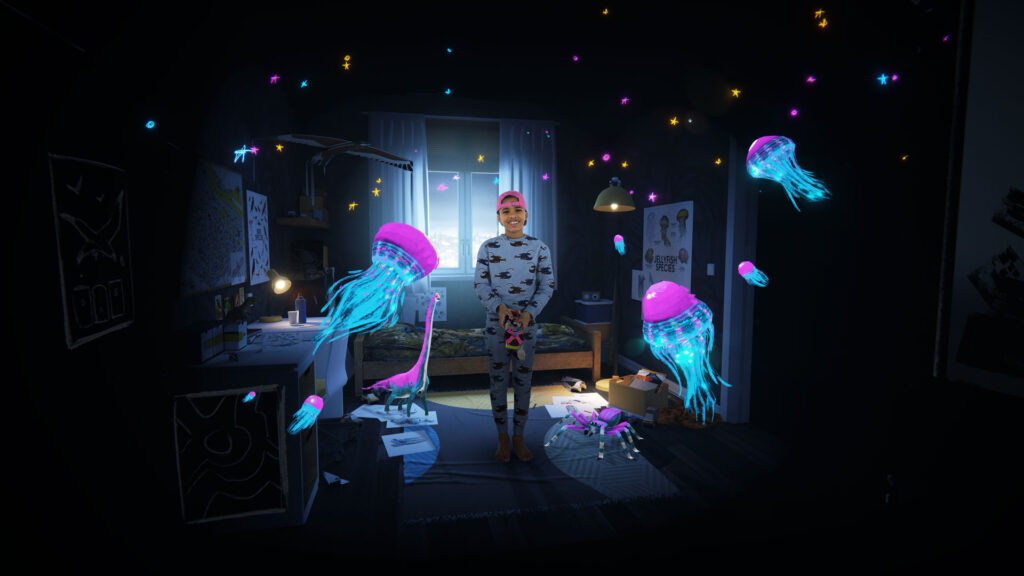About VR and its unique storytelling possibilities/Explanation of Technical Advancements
One of the great possibilities of VR is its power to directly include a player in its storytelling and allow them to be (almost) entirely present in the story world. The Imaginary Friend boldly seeks to push player involvement, setting out to create a personal experience where the player can actively engage with its lead character. With this unique challenge in interactive storytelling, the project utilises an exciting development in the field of VR: Volumetric video.
Volumetric video is a new technology that captures live performers in 3D, allowing our team to move real actors freely in the virtual space of the project. All the while, ensuring that the expressions and emotions of the performances are preserved. The team also pushes this technology further by making it interactive. Something no other Volumetric video project has done on this scale and with similar dramatic impact. Pioneering a technique called ‘head retargeting’, the team was able to subtly turn the actors head in the direction of the player. This contributes to the player feeling like they’re acknowledged by the lead character, greatly enhancing the connection you make during the experience.
To top things off, the boy’s imagination is populated with animated 3D elements that have the charm of children’s drawings and that overlay the very realistic 3d surroundings created by Koen Koopman that blend beautifully with the look and feel of the volumetrically captured actors and helps with distinguishing reality from fantasy.

Directors statement
I have always been fascinated by how people have different perceptions of reality. As our greatest tool, our imagination is really a double-edged sword. Letting us understand the world and each other, but also making us imagine things that are simply not true. It can lead to misunderstandings or can be the cause of unnecessary suffering.
Daniel is a boy with a very vivid imagination. He finds it hard to distinguish between what is real and what is not, which in turn amplifies his fears. His mother died in a car accident. As children have their own way of mourning, so does Daniel. He isn’t aware of his own feelings of sadness, but goes through a process of understanding them. At the start of the story, he creates an imaginary friend
that helps him overcome his (imagined) fears. Unfortunately, the rest of the world worries that he is going crazy, because he is talking to something no one can see.
The player will experience the whole story through the eyes of the Imaginary friend. This role is a psychological lens of how the boy sees the world. This gives the player a very natural place in the story world, providing a psychological dream-like trip through a magical realistic story-world. The intimate relationship between Daniel and his imaginary Friend is at the heart of the experience.
Although he made his imaginary friend up, Daniel doesn’t fully control him, just like no one really controls their subconsciousness. The imaginary friend is Daniels’ way of dealing with his situation.
The player goes from a good happy friend to someone that might have a bad influence on him. From someone he desperately needs, to someone that he is ready to let go of. Daniel practises friendship, grows and eventually learns to trust himself.
This is what I believe imagination is for: to solve our problems. Any bright future can only be built on our imagination, the imagination that helps us conquer our fears.